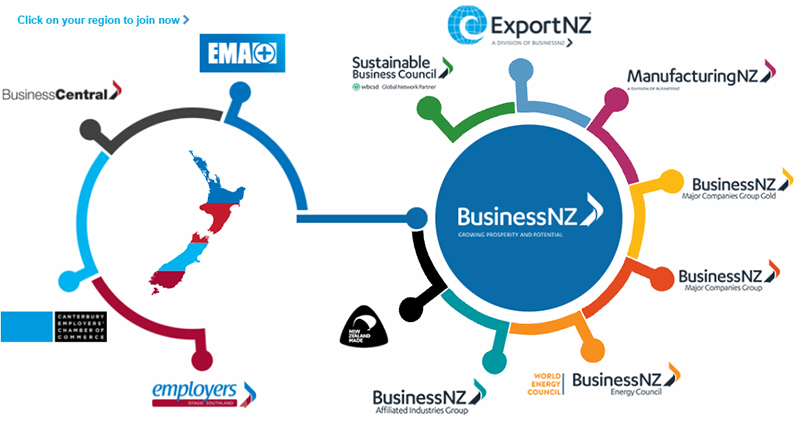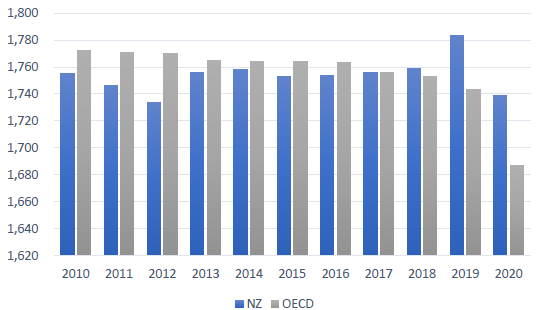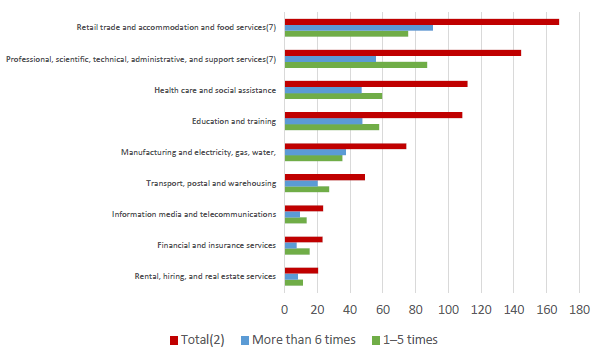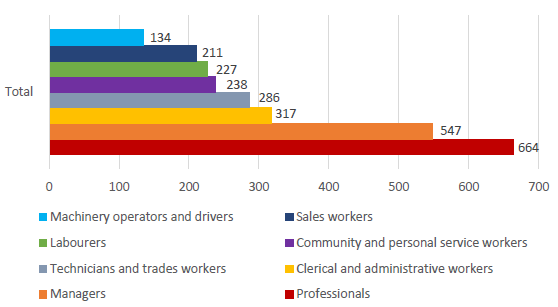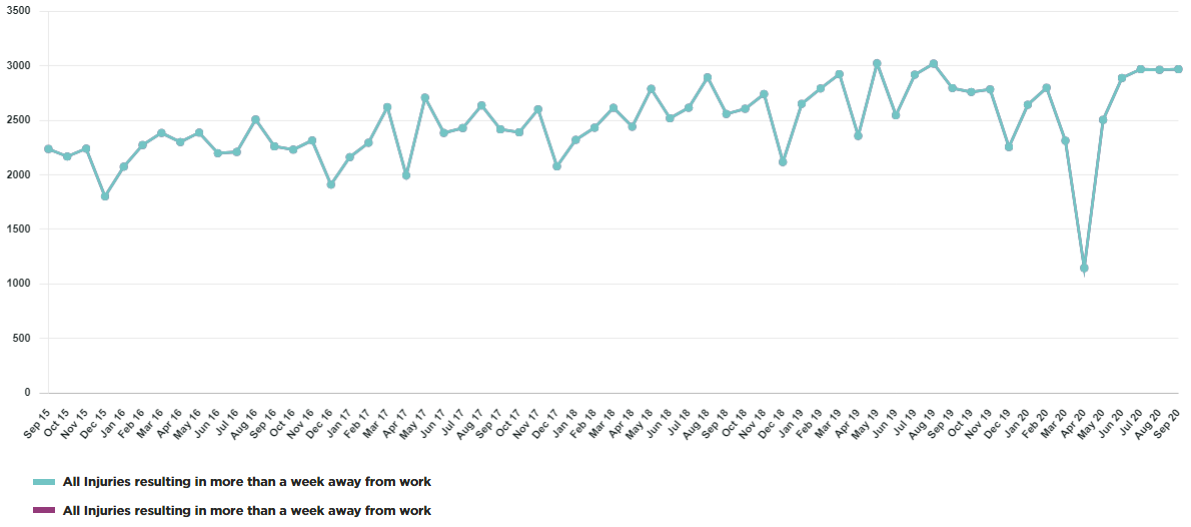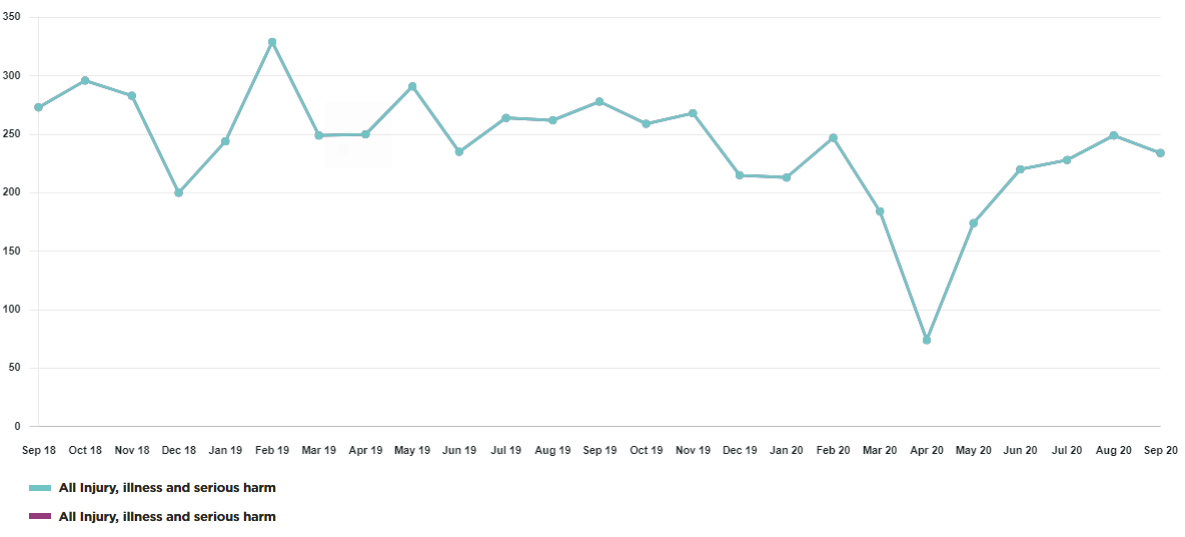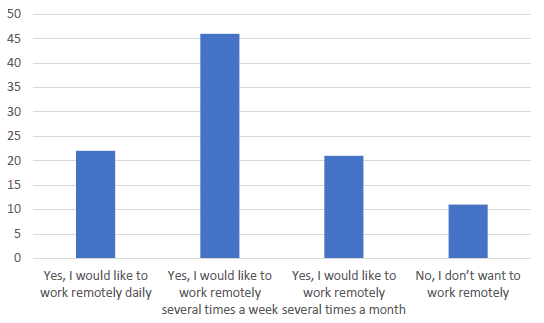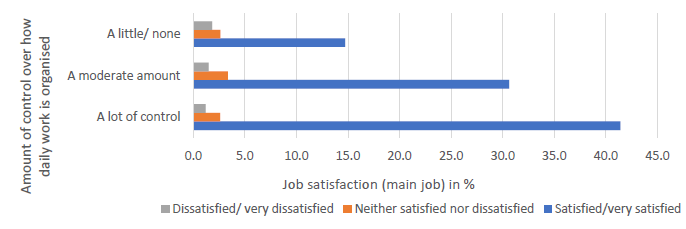Bell, J. (2020), ‘ NZ employment law changes in 2021 – key areas to watch ’, Human Resource Director (HRD), 9 December, accessed 5 July 2021.
Beehive (2020), ‘ Release of initial list of supported training to aid COVID-19 recovery ’, press release, 2 June, accessed 19 August 2021.
Beehive (2021), ‘ Government delivering more pathways into mahi for jobseekers ’, press release,11 August.
Blumenfeld, S., Ryall, S. and Kiely, P. (2017), Employment agreements: Bargaining trends and employment law update 2016–2017 , CLEW, Wellington.
Blumenfeld, S., Ryall, S. and Kiely, P. (2019), Employment agreements: Bargaining trends and employment law update 2018–2019 , CLEW, Wellington.
Blumenfeld, S., Ryall, S. and Kiely, P. (2020), Employment agreements: Bargaining trends and employment law update 2019–2020 , CLEW, Wellington.
Blumenfeld, S., Ryall, S. and Kiely, P. (2021), Employment agreements: Bargaining trends and employment law update 2020–2021 , CLEW, Wellington.
Boraman, T. (2019), ‘ Overworked and underpaid: The revival of strikes in NZ ’, NZ Herald, 11 March.
BusinessNZ (2019a), Membership, web page, accessed 23 August 2019.
BusinessNZ (2019b), Workplace wellness report 2019 , accessed 15 August 2021,
Carroll, M. (2020a), ‘ COVID-19 boosts NZ union membership, but aviation job losses hit E tū numbers ’, Stuff, 12 October, accessed 8 August 2021.
Carroll, M. (2020b), ‘ Working from home here to stay after 4 in 10 Kiwis did it during COVID lockdown ’, Stuff, 7 September, accessed 14 August 2021.
CIA (2021), The world factbook: Australia-Oceania: NZ, 29 June, Washington, DC.
Community Law (2021a), Rest breaks and meal breaks , web page, accessed 1 October 2021.
Community Law (2021b), COVID-19 employment FAQs , web page, accessed 1 October 2021.
CA (2014), In the Court of Appeal of NZ: CA631/2013 , Wellington.
CTU (2021a), About us, web page, accessed 8 August 2021.
CTU (2021b), CTU affiliates , web page, accessed 8 August 2021.
Devlin, C. (2020), ‘ Budget 2020: More than $2 billion to get Kiwis into jobs post COVID-19 ’, Stuff, 14 May 2020, accessed 17 August 2021.
Diversity Works NZ (2021), New Zealand workplace diversity survey 2021 (PDF), accessed 1 October 2021.
Education Counts (2020a), Vocational education & training (PDF), accessed 17 August 2021.
Education Counts (2020b), NZ’s workplace-based learners , accessed 17 August 2021.
EMA (2021), Membership , accessed 4 August 2021.
Employment Court of NZ (2021), Annual statistics , accessed 6 August 2021.
Employment NZ (2021a), Collective bargaining , web page, accessed 27 July 2021.
Employment NZ (2021b), Passing on collective agreement terms , web page, accessed 3 August 2021.
Employment NZ (2021c), Code of good faith in collective bargaining , web page, accessed 17 August 2021.
Employment NZ (2021d), Strikes and lockouts , web page, accessed 5 August 2021.
Employment NZ (2021e), Work stoppages , web page, accessed 5 August 2021.
Employment NZ (2021f), Unable to agree , web page, accessed 17 August 2021.
Employment NZ (2021g), Employment law database , web page, accessed 6 August 2021.
Employment NZ (2021h), Who is an employee , web page, accessed 26 July 2021.
Employment NZ (2021i), Types of employment agreement , web page, accessed 17 August 2021.
Employment NZ (2021j), Garden leave , web page, accessed 26 July 2021.
Employment NZ (2021k), Dismissal , web page, accessed 26 July 2021.
Employment NZ (2021l), Trial and probationary periods , web page, accessed 26 July 2021.
Employment NZ (2021m), Annual holidays , web page, accessed 26 July 2021.
Employment NZ (2021n), Leave and pay entitlements during COVID-19 response and recovery , web page, accessed 26 July 2021.
Employment NZ (2021o), Sick leave entitlements , web page, accessed 27 July 2021.
Employment NZ (2021p), Current minimum wage rates , web page, accessed 17 August 2021.
Employment NZ (2021q), Rest and meal breaks , web page, accessed 14 August 2021.
Employment NZ (2021r), Breastfeeding at work , web page, accessed 17 August 2021.
Employment NZ (2021s), FWAs , web page, accessed 17 August 2021.
Employment NZ (2021t), Transferring a public holiday by agreement , web page, accessed 17 August 2021.
Employment NZ (2021u), COVID-19 and the workplace , web page, accessed 17 August 2021.
Employment NZ (2021v), On-the-job training , web page, accessed 17 August 2021.
Employment NZ (2021w), Pay and employment equity , web page, accessed 18 August 2021.
Employment NZ (2020), Types of parental leave , web page, accessed 27 July 2021.
Employment NZ (2019a), Employment Relations Amendment Act 2018 , web page, accessed 18 August 2021.
Employment NZ (2019b), Hours of work , web page, accessed 23 August 2019.
Eurostat (2021a), Data browser: Real GDP per capita , web page, accessed 7 July 2021.
Eurostat (2021b), Unemployment by sex and age, annual data , web page, accessed 7 July 2021.
Gerritsen, J (2020), ‘ Budget 2020: Trades training gets $1.6bn boost ’, RNZ, 14 May 2020, accessed 17 August 2021.
Grant Thornton International (2018), Women in business: Beyond policy to progress , accessed 18 August 2021.
Greenwood, G. (2016), Transforming employment relationships? Making sense of conflict management in the workplace , PhD thesis, AUT, Auckland.
Hennecke, J., Meehan, L. and Pacheco, G. (2021a), Workplace health and safety and the future of work in NZ – literature review, NZ Work Research Institute, Auckland.
Hennecke, J., Meehan, L., and Pacheco, G. (2021b), Workplace safety and the future of work in NZ , NZ Work Research Institute, Auckland.
HRC (2018), Tracking equality at work 2018: Summary and recommendations , HRC, Auckland.
Huang, H. (2016), Mediation under the ERA 2000: Has the promise been fulfilled? , report submitted for the LLB (Honours) Degree at Victoria University of Wellington.
Inland Revenue (2021), Getting my KiwiSaver funds when I retire , web page, accessed 27 July 2021.
ILO (2021), National labour law profile: NZ , web page, accessed 20 August 2021.
Independent Taskforce on Workplace Health and Safety (2013), The report of the Independent Taskforce on Workplace Health and Safety , NZ Government, Wellington.
Jülich, S. and Cox, N. (2013), ‘Good workplaces: Alternative dispute resolution and restorative justice’ , in Parker, J. (ed.), The big issues in employment: HR management and employment relations in NZ , CCH NZ, Auckland.
Junaid, F. and Parker, J. (2021), Keeping all workers safe: Collective learning about health and safety, 2nd Conference of the Asia Pacific Academy for Psychosocial Factors at Work. Well-being versus Productivity Decent Future Work, 27–30 July, University Malaya, Malaysia (online).
Kent, A. (2021), NZ’s fair pay agreements: A new direction in sectoral and occupational bargaining, labour and i ndustry: A journal of the social and economic relations of work, DOI: 10.1080/10301763.2021.1910899
Leal, N. (2020), NZ forging ahead with civil service gender equality, Global Government Forum , 10 December, accessed 6 July 2021.
Manch, T. (2021), ‘ Government launches new Ministry for Ethnic Communities ’, Stuff, 1 July, accessed 6 July 2021.
MBIE (2015), Independent dispute resolution providers in NZ: A 2015 snapshot , MBIE, Wellington.
MBIE (2018), Minimum wage review 2018 , Wellington: MBIE.
MBIE (2019), National Survey of Employers 2018/19: Summary Findings , October, accessed 17 August 2021.
MBIE (2021a), Future of Work Tripartite Forum , 20 January, accessed 4 August 2021.
MBIE (2021b), Fair Pay Agreements , accessed 27 July 2021.
MBIE (2021c), The proposed Fair Pay Agreement system, accessed 27 July 2021.
MBIE (2021d), ITOs , accessed 17 August 2021.
Metge, J. (2001),Comments provided to the Law Commission on a draft paper: ‘M āori custom and values in NZ law’, 16 February.
MfW (2020), Gender pay gap , website, accessed 20 August 2021.
MfW (2019), Gender pay principles , web page, accessed 20 August 2021.
MfW (2018), Eliminating the public service gender pay gap: 2018–2020 action plan (PDF), Wellington.
MoE and MBIE (2016), Skills in NZ and around the world: Survey of adult skills (PIAAC ), MBIE, Wellington.
Ministry of Justice (2019), Learn about the justice system: Treaty of Waitangi , accessed 23 August 2019.
MSD (2021), Who can get the COVID-19 Leave Support Scheme , accessed 27 July 2021.
Nadkarni, A. (2021), Mental health ‘tsunami’ to hit workplaces , 14 June, Newsroom, accessed 15 August 2021.
NZ Companies Office (2020), Union membership return report 2020 , NZCO, Auckland.
NZ Government (2019), He waka eke noa: Towards a better future, together: NZ’s progress towards the SDGs – 2019 (PDF) , accessed 6 July 2021.
NZ Government (2018), Government inquiry into mental health and addiction: Executive summary , website, 21 December, accessed 20 August 2021.
NZ Productivity Commission (2021), Productivity by the numbers. Report, May, Productivity Commission, Wellington.
NZ Treasury (2020), The NZ economy , accessed 5 July 2021.
NOHSAC (National Occupational Health and Safety Advisory Committee) (2004), Occupational disease and injury in NZ: Technical report , Wellington.
OECD (2015), OECD economic surveys: NZ, 2015 , Paris: OECD.
OECD (2017), Work–life balance , web page, accessed 20 August 2021.
OECD (2021a), Economic Outlook: NZ, 2021(1), Preliminary version , no. 109, accessed 5 July 2021.
OECD (2021b), NZ: Economic snapshot , accessed 5 July 2021.
OECD (2021c), OECD employment outlook , accessed 13 August 2021.
OECD (2021d), NZ , accessed 17 August 2021.
OECD (2021e), Incidence of involuntary part-time workers , accessed 4 August 2021.
OECD and AIAS (2021), Institutional characteristics of trade unions, wage setting, state intervention and social pacts , (ICTWSS database), OECD Publishing, Paris.
Office for Disability Issues (2019), Disability action plan 2019–2023 , accessed 6 July 2021.
Office for Disability Issues (2016), NZ disability strategy 2016–2026 , Wellington.
O’Kane, P., Walton, D. and Ruwhiu, D. (2020), Remote Working during COVID-19 NZ national survey: Initial report , July 2020, July, accessed 18 August 2021.
Parker, J. (ed.) (2013) , The big issues in employment: HR management and employment relations in NZ – Introduction, CCH NZ, Auckland.
Parker, J. and Donnelly, N. (2020), The revival and refashioning of ender pay equity in NZ. Journal of Industrial Relations, 62(4): 560-581.
Parker, J. and Donnelly, N. (2021), Historical developments in the gender pay gap in New Zealand/Aotearoa: A longitudinal employment relations critique, Labour History.
Parker, J., Young-Hauser, A., Loga, P., Sayers, J., Paea, S. and Barnett, S. (2021), Intersectional inclusion? Gender and ethnic equity in NZ’s public service, paper presented at the International Labour and Employment Relations Association World Congress, Lund University, Sweden/online, 24 June.
PricewaterhouseCoopers NZ (2021), Remote working: Employer challenges and how to overcome them (PDF), accessed 17 August 2021.
PSC (2020), Workforce data , 9 December, accessed 6 July 2021.
Pullar-Strecker, T. (2021), ‘ Shock fall in unemployment to 4.9% ’, Stuff, 3 February, accessed 5 July 2021.
Roy, E. (2020), ‘ NZ in COVID recession after worst quarterly GDP fall on record’ , The Guardian , 17 September, accessed 5 July 2021,
Royal Commission on the Pike River Coal Mine Tragedy (2012), Royal Commission on the Pike River Coal Mine Tragedy: Volume 2 , Royal Commission, Wellington.
Rudman, R. (2013), NZ employment law guide, CCH NZ, Auckland.
Ryall, S. and Blumenfeld, S. (2016), Unions and union membership in NZ – report on 2016 survey , CLEW, Victoria University, Wellington.
Ryall, S. and Blumenfeld, S. (2017), Unions and union membership in NZ – report on 2017 survey , CLEW, Victoria University, Wellington.
Sadler, R. (2020), NZ’s gender pay gap estimated at nearly 18 percent – consultants , NewsHub, 6 July, accessed on 6 July 2021.
Stats NZ (2017), Labour market statistics: December 2017 quarter , web page, accessed 23 August 2019.
Stats NZ (2018), Regional gross domestic product: Year ended March 2017 , web page, accessed 23 August 2019.
Stats NZ (2019a), NZ’s population reflects growing diversity , web page, accessed 5 July 2021.
Stats NZ (2019b), Survey of working life: 2018 , web page, accessed 23 August 2019.
Stats NZ (2020a), Household labour force survey: 2020 quarter , web page, accessed 5 July 2021.
Stats NZ (2020b), NZ business demography statistics: At February 2020 , web page, accessed 4 August 2020.
Stats NZ (2021a), Labour market statistics: March 2021 quarter , web page, accessed 5 July 2021.
Stats NZ (2021b), Labour market statistics: December 2020 quarter , web page, accessed 4 August 2021.
Stats NZ (2021c), Injury statistics – work-related claims: 2020 , 26 July, accessed 17 August 2021.
Technical Advisory Services (2021), National Bipartite Action Group (NBAG) , accessed 4 August 2021.
TEC (2020), Pūrngo-ā-tau annual report for the year ended 30 June 2020 (PDF), accessed 17 August 2021.
TEC (2021), Pūrongo-ā-tau annual report for the year ended 30 June 2020 (PDF), accessed 17 August 2021.
TEC (2021), Budget 2021 , website, accessed 20 August 2021.
Umbrella (2021), Workplace changes since COVID-19 hit our shores: New insights from the Umbrella Wellbeing Assessment , accessed 13 August 2021.
United Nations Committee on the Elimination of Discrimination Against Women (2018), Concluding observations on the eighth periodic report of NZ , 20 July, accessed 6 July 2021.
Vergara, M. (2020), ‘ 11,000 New Zealanders have lost their jobs – and 10,000 of them were women ’, The Spinoff, 5 August, accessed 27 July 2021.
Withers, T. and Bloomberg (2020), ‘ A country with one of the strictest COVID lockdowns is seeing a V-shaped recovery ’, Fortune, 17 December, accessed 5 July 2021.
Work and Income (2021), COVID-19 wage subsidy March 2021 , web page, accessed 14 August 2021.
WorkSafe NZ (2020), Progress toward the 2020 acute injury target , web page, accessed 2 August 2021.
WorkSafe NZ (2021a), Injuries resulting in more than a week away from work from September 2015–September 2020 , web page, accessed 1 October 2021.
WorkSafe NZ (2021b), Non-fatal injuries and illnesses for all industries, September 2018–September 2020 , web page, accessed 1 October 2021.
World Bank (2021), GDP per capita (current US$) , web page, accessed 5 July 2021.
Zehr, H. (2002), The little book of restorative justice, Good Books, Pennsylvania, USA.
Employment NZ (2021g), Employment law database , web page, accessed 6 August 2021.
Employment NZ (2021h), Who is an employee , web page, accessed 26 July 2021.
Employment NZ (2021i), Types of employment agreement , web page, accessed 17 August 2021.
Employment NZ (2021j), Garden leave , web page, accessed 26 July 2021.
Employment NZ (2021k), Dismissal , web page, accessed 26 July 2021.
Employment NZ (2021l), Trial and probationary periods , web page, accessed 26 July 2021.
Employment NZ (2021m), Annual holidays , web page, accessed 26 July 2021.
Employment NZ (2021n), Leave and pay entitlements during COVID-19 response and recovery , web page, accessed 26 July 2021.
Employment NZ (2021o), Sick leave entitlements , web page, accessed 27 July 2021.
Employment NZ (2021p), Current minimum wage rates , web page, accessed 17 August 2021.
Employment NZ (2021q), Rest and meal breaks , web page, accessed 14 August 2021.
Employment NZ (2021r), Breastfeeding at work , web page, accessed 17 August 2021.
Employment NZ (2021s), FWAs , web page, accessed 17 August 2021.
Employment NZ (2021t), Transferring a public holiday by agreement , web page, accessed 17 August 2021.
Employment NZ (2021u), COVID-19 and the workplace , web page, accessed 17 August 2021.
Employment NZ (2021v), On-the-job training , web page, accessed 17 August 2021.
Employment NZ (2021w), Pay and employment equity , web page, accessed 18 August 2021.
Employment NZ (2020), Types of parental leave , web page, accessed 27 July 2021.
Employment NZ (2019a), Employment Relations Amendment Act 2018 , web page, accessed 18 August 2021.
Employment NZ (2019b), Hours of work , web page, accessed 23 August 2019.
Eurostat (2021a), Data browser: Real GDP per capita , web page, accessed 7 July 2021.
Eurostat (2021b), Unemployment by sex and age, annual data , web page, accessed 7 July 2021.
Gerritsen, J (2020), ‘ Budget 2020: Trades training gets $1.6bn boost ’, RNZ, 14 May 2020, accessed 17 August 2021.
Grant Thornton International (2018), Women in business: Beyond policy to progress , accessed 18 August 2021.
Greenwood, G. (2016), Transforming employment relationships? Making sense of conflict management in the workplace , PhD thesis, AUT, Auckland.
Hennecke, J., Meehan, L. and Pacheco, G. (2021a), Workplace health and safety and the future of work in NZ – literature review, NZ Work Research Institute, Auckland.
Hennecke, J., Meehan, L., and Pacheco, G. (2021b), Workplace safety and the future of work in NZ , NZ Work Research Institute, Auckland.
HRC (2018), Tracking equality at work 2018: Summary and recommendations , HRC, Auckland.
Huang, H. (2016), Mediation under the ERA 2000: Has the promise been fulfilled? , report submitted for the LLB (Honours) Degree at Victoria University of Wellington.
Inland Revenue (2021), Getting my SiwiSaver funds when I retire , web page, accessed 27 July 2021.
ILO (2021), National labour law profile: NZ , web page, accessed 20 August 2021.
Independent Taskforce on Workplace Health and Safety (2013), The report of the Independent Taskforce on Workplace Health and Safety , NZ Government, Wellington.
Jülich, S. and Cox, N. (2013), ‘Good workplaces: Alternative dispute resolution and restorative justice’ , in Parker, J. (ed.), The big issues in employment: HR management and employment relations in NZ , CCH NZ, Auckland.
Junaid, F. and Parker, J. (2021), Keeping all workers safe: Collective learning about health and safety, 2nd Conference of the Asia Pacific Academy for Psychosocial Factors at Work. Well-being versus Productivity Decent Future Work, 27–30 July, University Malaya, Malaysia (online).
Kent, A. (2021), NZ’s fair pay agreements: A new direction in sectoral and occupational bargaining, labour and i ndustry: A journal of the social and economic relations of work, DOI: 10.1080/10301763.2021.1910899
Leal, N. (2020), NZ forging ahead with civil service gender equality, Global Government Forum , 10 December, accessed 6 July 2021.
Manch, T. (2021), ‘ Government launches new Ministry for Ethnic Communities ’, Stuff, 1 July, accessed 6 July 2021.
MBIE (2015), Independent dispute resolution providers in NZ: A 2015 snapshot , MBIE, Wellington.
MBIE (2018), Minimum wage review 2018 , Wellington: MBIE.
MBIE (2019), National Survey of Employers 2018/19: Summary Findings , October, accessed 17 August 2021.
MBIE (2021a), Future of Work Tripartite Forum , 20 January, accessed 4 August 2021.
MBIE (2021b), Fair Pay Agreements , accessed 27 July 2021.
MBIE (2021c), The proposed Fair Pay Agreement system, accessed 27 July 2021.
MBIE (2021d), ITOs , accessed 17 August 2021.
Metge, J. (2001),Comments provided to the Law Commission on a draft paper: ‘M āori custom and values in NZ law’, 16 February.
MfW (2020), Gender pay gap , website, accessed 20 August 2021.
MfW (2019), Gender pay principles , web page, accessed 20 August 2021.
MfW (2018), Eliminating the public service gender pay gap: 2018–2020 action plan (PDF), Wellington.
MoE and MBIE (2016), Skills in NZ and around the world: Survey of adult skills (PIAAC ), MBIE, Wellington.
Ministry of Justice (2019), Learn about the justice system: Treaty of Waitangi , accessed 23 August 2019.
MSD (2021), Who can get the COVID-19 Leave Support Scheme , accessed 27 July 2021.
Nadkarni, A. (2021), Mental health ‘tsunami’ to hit workplaces , 14 June, Newsroom, accessed 15 August 2021.
NZ Companies Office (2020), Union membership return report 2020 , NZCO, Auckland.
NZ Government (2019), He waka eke noa: Towards a better future, together: NZ’s progress towards the SDGs – 2019 (PDF) , accessed 6 July 2021.
NZ Government (2018), Government inquiry into mental health and addiction: Executive summary , website, 21 December, accessed 20 August 2021.
NZ Productivity Commission (2021), Productivity by the numbers. Report, May, Productivity Commission, Wellington.
NZ Treasury (2020), The NZ economy , accessed 5 July 2021.
NOHSAC (National Occupational Health and Safety Advisory Committee) (2004), Occupational disease and injury in NZ: Technical report , Wellington.
OECD (2015), OECD economic surveys: NZ, 2015 , Paris: OECD.
OECD (2017), Work–life balance , web page, accessed 20 August 2021.
OECD (2021a), Economic Outlook: NZ, 2021(1), Preliminary version , no. 109, accessed 5 July 2021.
OECD (2021b), NZ: Economic snapshot , accessed 5 July 2021.
OECD (2021c), OECD employment outlook , accessed 13 August 2021.
OECD (2021d), NZ , accessed 17 August 2021.
OECD (2021e), Incidence of involuntary part-time workers , accessed 4 August 2021.
OECD and AIAS (2021), Institutional characteristics of trade unions, wage setting, state intervention and social pacts , (ICTWSS database), OECD Publishing, Paris.
Office for Disability Issues (2019), Disability action plan 2019–2023 , accessed 6 July 2021.
Office for Disability Issues (2016), NZ disability strategy 2016–2026 , Wellington.
O’Kane, P., Walton, D. and Ruwhiu, D. (2020), Remote Working during COVID-19 NZ national survey: Initial report , July 2020, July, accessed 18 August 2021.
Parker, J. (ed.) (2013) , The big issues in employment: HR management and employment relations in NZ – Introduction, CCH NZ, Auckland.
Parker, J. and Donnelly, N. (2020), The revival and refashioning of ender pay equity in NZ. Journal of Industrial Relations, 62(4): 560-581.
Parker, J. and Donnelly, N. (2021), Historical developments in the gender pay gap in New Zealand/Aotearoa: A longitudinal employment relations critique, Labour History.
Parker, J., Young-Hauser, A., Loga, P., Sayers, J., Paea, S. and Barnett, S. (2021), Intersectional inclusion? Gender and ethnic equity in NZ’s public service, paper presented at the International Labour and Employment Relations Association World Congress, Lund University, Sweden/online, 24 June.
PricewaterhouseCoopers NZ (2021), Remote working: Employer challenges and how to overcome them (PDF), accessed 17 August 2021.
PSC (2020), Workforce data , 9 December, accessed 6 July 2021.
Pullar-Strecker, T. (2021), ‘ Shock fall in unemployment to 4.9% ’, Stuff, 3 February, accessed 5 July 2021.
Roy, E. (2020), ‘ NZ in COVID recession after worst quarterly GDP fall on record’ , The Guardian , 17 September, accessed 5 July 2021,
Royal Commission on the Pike River Coal Mine Tragedy (2012), Royal Commission on the Pike River Coal Mine Tragedy: Volume 2 , Royal Commission, Wellington.
Rudman, R. (2013), NZ employment law guide, CCH NZ, Auckland.
Ryall, S. and Blumenfeld, S. (2016), Unions and union membership in NZ – report on 2016 survey , CLEW, Victoria University, Wellington.
Ryall, S. and Blumenfeld, S. (2017), Unions and union membership in NZ – report on 2017 survey , CLEW, Victoria University, Wellington.
Sadler, R. (2020), NZ’s gender pay gap estimated at nearly 18 percent – consultants , NewsHub, 6 July, accessed on 6 July 2021.
Stats NZ (2017), Labour market statistics: December 2017 quarter , web page, accessed 23 August 2019.
Stats NZ (2018), Regional gross domestic product: Year ended March 2017 , web page, accessed 23 August 2019.
Stats NZ (2019a), NZ’s population reflects growing diversity , web page, accessed 5 July 2021.
Stats NZ (2019b), Survey of working life: 2018 , web page, accessed 23 August 2019.
Stats NZ (2020a), Household labour force survey: 2020 quarter , web page, accessed 5 July 2021.
Stats NZ (2020b), NZ business demography statistics: At February 2020 , web page, accessed 4 August 2020.
Stats NZ (2021a), Labour market statistics: March 2021 quarter , web page, accessed 5 July 2021.
Stats NZ (2021b), Labour market statistics: December 2020 quarter , web page, accessed 4 August 2021.
Stats NZ (2021c), Injury statistics – work-related claims: 2020 , 26 July, accessed 17 August 2021.
Technical Advisory Services (2021), National Bipartite Action Group (NBAG) , accessed 4 August 2021.
TEC (2020), Pūrngo-ā-tau annual report for the year ended 30 June 2020 (PDF), accessed 17 August 2021.
TEC (2021), Pūrongo-ā-tau annual report for the year ended 30 June 2020 (PDF), accessed 17 August 2021.
TEC (2021), Budget 2021 , website, accessed 20 August 2021.
Umbrella (2021), Workplace changes since COVID-19 hit our shores: New insights from the Umbrella Wellbeing Assessment , accessed 13 August 2021.
United Nations Committee on the Elimination of Discrimination Against Women (2018), Concluding observations on the eighth periodic report of NZ , 20 July, accessed 6 July 2021.
Vergara, M. (2020), ‘ 11,000 New Zealanders have lost their jobs – and 10,000 of them were women ’, The Spinoff, 5 August, accessed 27 July 2021.
Withers, T. and Bloomberg (2020), ‘ A country with one of the strictest COVID lockdowns is seeing a V-shaped recovery ’, Fortune, 17 December, accessed 5 July 2021.
Work and Income (2021), COVID-19 wage subsidy March 2021 , web page, accessed 14 August 2021.
WorkSafe NZ (2020), Progress toward the 2020 acute injury target , web page, accessed 2 August 2021.
WorkSafe NZ (2021a), Injuries resulting in more than a week away from work from September 2015–September 2020 , web page, accessed 1 October 2021.
WorkSafe NZ (2021b), Non-fatal injuries and illnesses for all industries, September 2018–September 2020 , web page, accessed 1 October 2021.
World Bank (2021), GDP per capita (current US$) , web page, accessed 5 July 2021.
Zehr, H. (2002), The little book of restorative justice, Good Books, Pennsylvania, USA.
